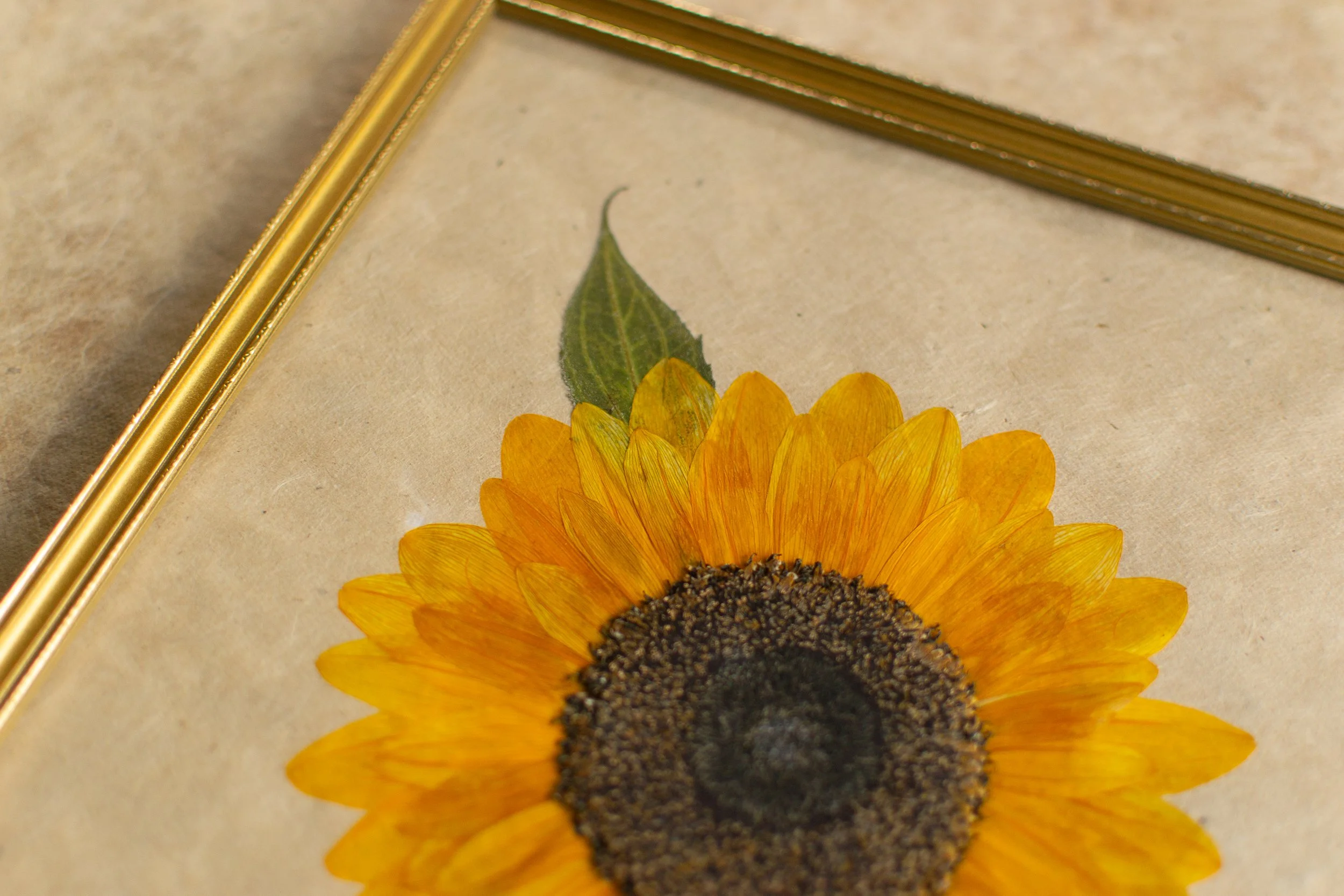How to press thick flowers
When it comes to traditional flower pressing, working with thick flowers (or ‘juicy’ flowers as I like to call them!) is challenging. These types of flowers contain a lot of moisture, and are at high risk of moulding or turning brown during the pressing process. Examples of thick flowers include roses, dahlias, sunflowers and peonies. Flowers such as peonies that are very petal-dense also risk losing a lot of interest and definition if pressed whole, as their petals tend to turn into one mass, all overlapping one-another and losing some of their charm.
I never press thick juicy flowers whole. Instead, I deconstruct them, pressing different parts of the flower individually, thinning parts out if needed, and then reconstructing them after pressing by glueing them back together. This gives much better control over how they press and it allows me to recreate the flowers to fully celebrate their beauty.
The very best way to learn which flowers press well when left whole and which don’t is to experiment! You could try pressing two of the same flower: one whole and one deconstructed, and see how they turn out. Please don’t feel disheartened if you end up with a mouldy flower - it’s a completely normal part of flower pressing and it happens occasionally even to those of us who have been pressing flowers for many years! Don’t forget to use good quality blotting paper in your flower press, and if you’re pressing thicker flowers, use multiple layers of blotting paper to help to draw the moisture out quickly.

